- Community & Alumni Engagement
- Mountain Heritage Center
- Heritage and History
- From Teachers College to University: 1947-1967
From Teachers College to University: 1947-1967
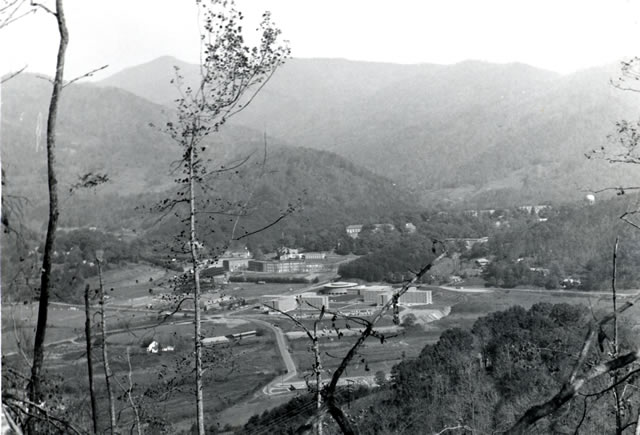
This photograph shows the construction on the lower campus resulting from the building boom of the 1960s. Helder Dorm, the round Dotson Cafeteria, and Leatherwood Dorm are L-R in the center foreground. Reid Gym, partially obscured by a tree, can barely be made out to the left of Helder.
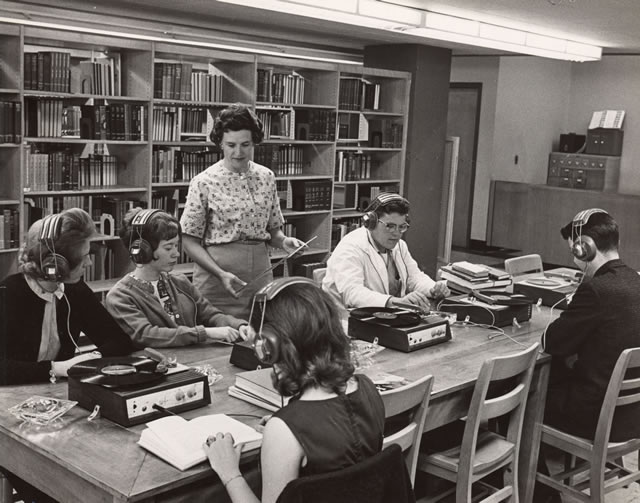
The "Listening Table," being demonstrated to students by Assistant Librarian Dorris Dills in 1964, represents the major educational changes undergone by the school in the 1960s. It allowed students to listen to music, six languages, poetry, drama, and dictation exercises.
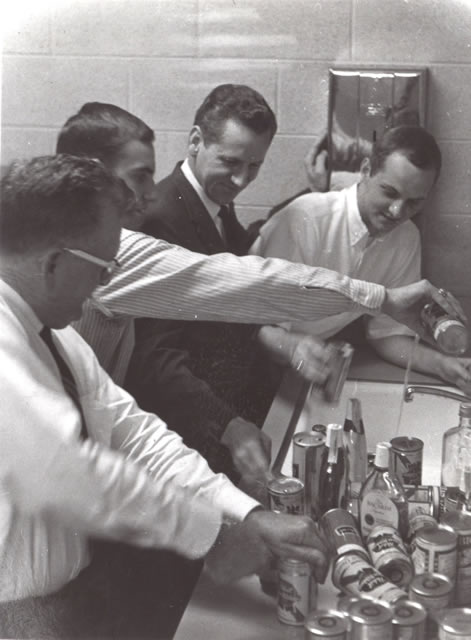
Rules governing student life remained stringent through the 1960s. Dormitories were inspected regularly, alcohol was confiscated, and students were punished for violations with work hours or were sent home. Here Taylor Huskins, dean of student affairs, presides over the disposal of contraband in the basement of Bird Building. Left to right: James Kirkpatrick, business manager; Steve George, student body vice president; Huskins; Bill Melton, student body president.
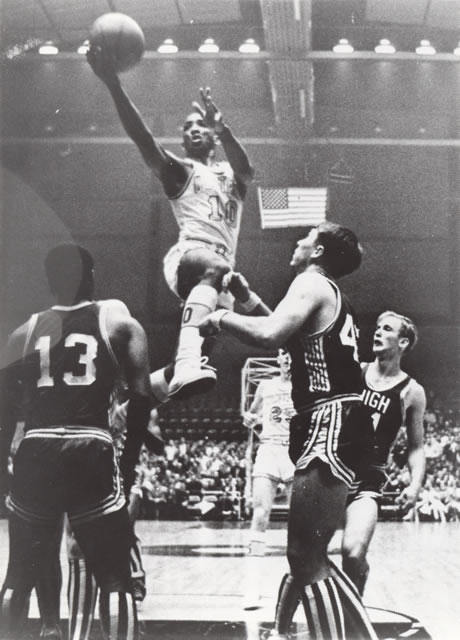
Henry Logan driving for the basket against High Point College. Logan was an All-American all four years of his college career, 1965-68. He set school records for most points scored in a game (60 against Atlantic Christian in 1967), most points scored in a season (1,049), most points scored in a career (3,290 in 107 games), and highest career scoring average (30.7). He was Western's first African-American intercollegiate athlete and the first to play for a predominantly-white institution in the Southeast. Logan later played professional basketball for the Oakland Oaks, Washington Caps, and Virginia Squires.
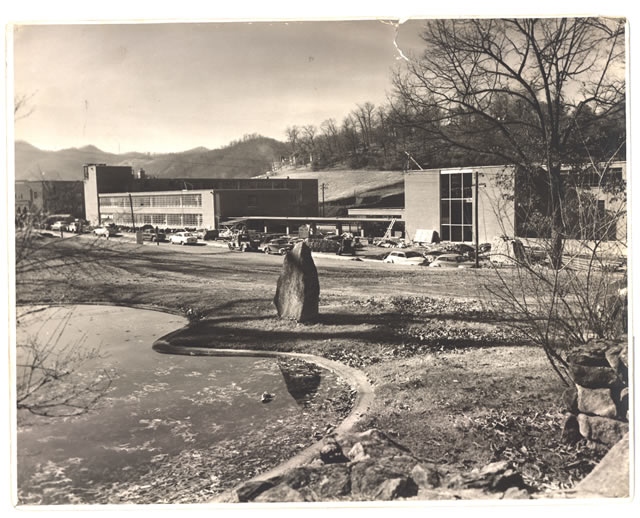
This 1953 photograph shows the completed Stillwell Building (left), and Hunter Library (right) under construction; Hoey Auditorium is partially visible on the far left. Stillwell was built to house science classes. The large glass front on Hunter was the main entrance; when an addition to Hunter was built in 1982, the main entrance was moved to the left side facing Stillwell. The upright stone in the center foreground was a monument commemorating Robert Lee Madison; it stood by the ornamental pool for many years.
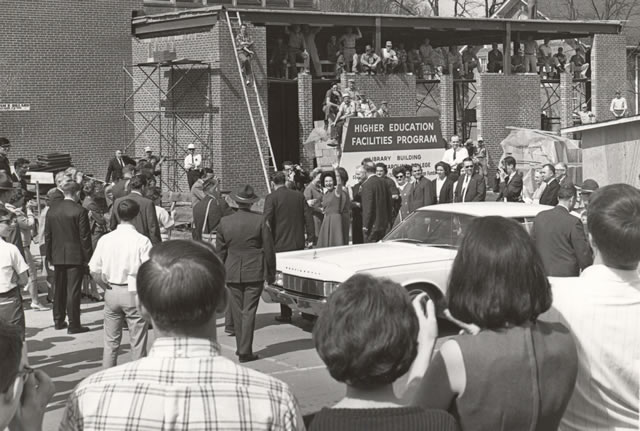
Originally planned to last 50 years, Hunter Library was already expanding by 1967. In March of that year, President Lyndon B. Johnson’s wife Lady Bird [near the right front fender of the vehicle, waving to the crowd], visited Jackson County's Sols Creek and Canada consolidated school, a National Teacher Corps Demonstration Center. On her way home, she attended ceremonies dedicating the new wing of Hunter Library. Correspondents from all three major television networks covered her visit. In 1983, the Library underwent another, much larger, expansion.
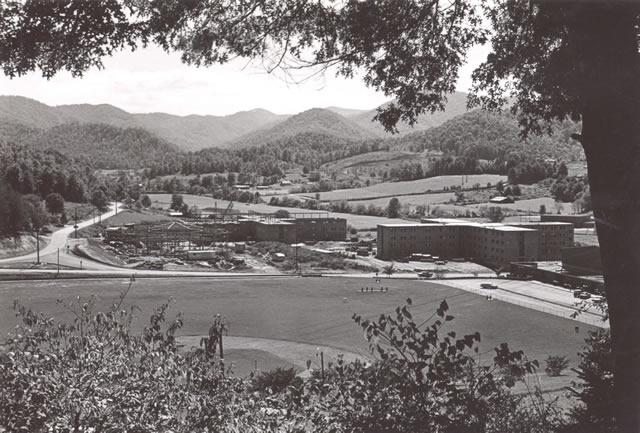
This photograph, taken from Buzzard's Roost, shows Dodson Cafeteria on the left, and Leatherwood Dormitory behind it, under construction. To the right is the completed Helder Dormitory. All three buildings were opened in 1966. Note the baseball field (where A.K. Hinds University Center stands today) in the foreground, on what is now the University Center lawn.
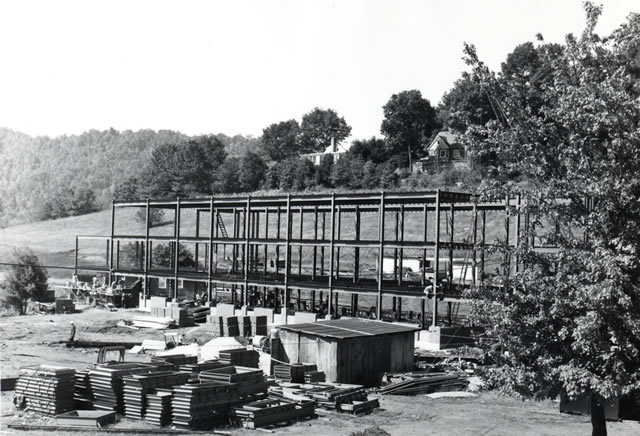
Killian Building, designed to house the School of Education and Psychology, was under construction in 1967. Houses on Buzzards Roost line the ridge behind it.
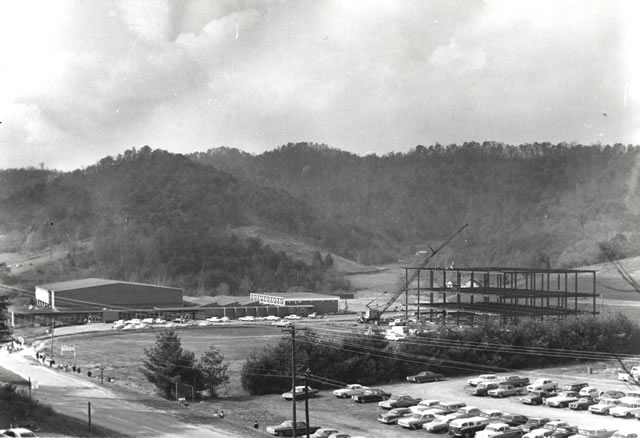
To the right, Hinds University Center, opened in 1968, under construction. Reid Gym is to the left. The small cove in the center-right background is today the home of the North Carolina Center for the Advancement of Teaching.
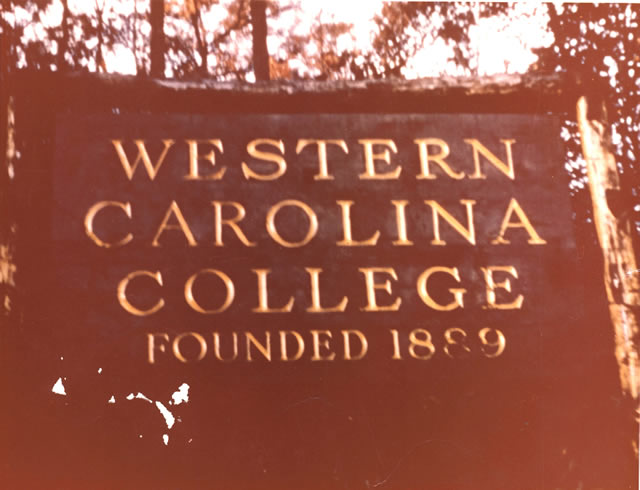
By the 1950s, Western Carolina Teachers College had not kept up with changing trends in higher education. The arrival of a new president in 1949, Paul A. Reid, stimulated a thorough reevaluation of the college's role. The result was a transformation from a teachers college to a multi-purpose institution, reflected by a new name, Western Carolina College.
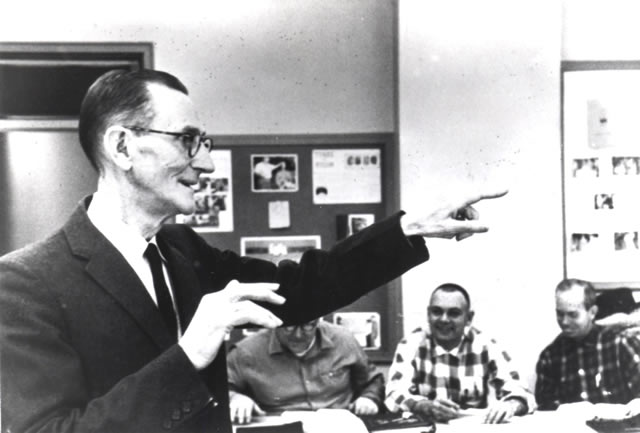
In the mid-1950s, WCC began an innovative in-service educational program for adults who wished to improve their career skills. It was first designed for employees at the American Enka plant outside Asheville. This photograph of Ernest Bird with his adult education class appeared in the January 15, 1960 issue of Life magazine. Bird had retired in 1957 but taught part-time for several more years.
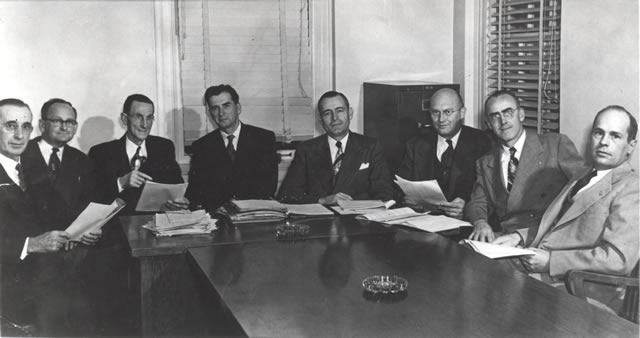
In 1959, Western launched its own graduate division -- independent of the University of North Carolina -- offering a master of arts in education degree. This photograph shows the graduate faculty. Left to right: Hugh P. Smith, social sciences; Carl D. Killian, education and psychology; W. Ernest Bird, English; Rosser H. Taylor, social sciences; President Paul A. Reid; A. Keith Hinds, mathematics; William A. Ashbrook, business; and W. Newton Turner, geography and geology and graduate division director.
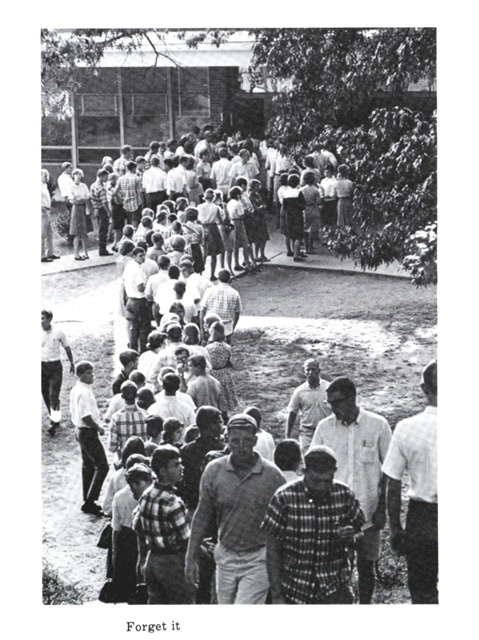
As the student body grew to 4,000 in 1967, lines also grew. Rather than wait in line, some students gave up in disgust, at least temporarily.
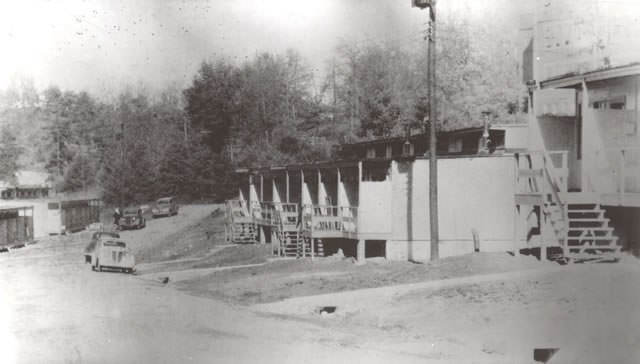
Boodleville, prefabricated housing obtained from the military, was home to many of Western's married veterans after World War II. The community had its own mayor, council, and fire department. The 1956 Catamount observed that "Boodleville could be called a town within the college." Boodleville stood across from Brown Cafeteria where Albright and Benton Dormitories are located today.
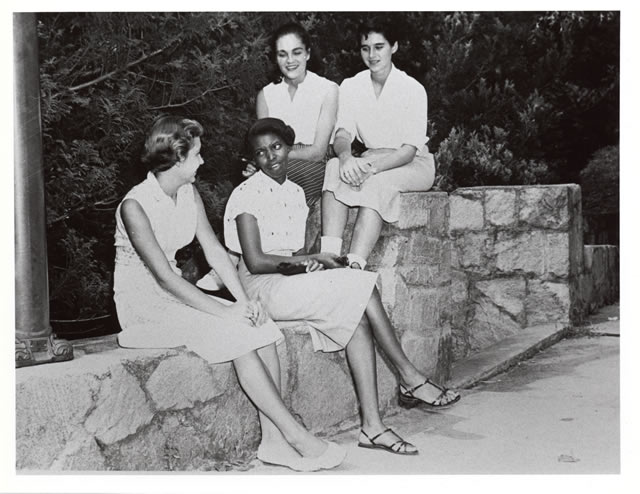
Three years after the Brown v. Board of Education Supreme Court ruling in 1954, Levern Hamlin was admitted to Western's graduate summer school session. She was among the first African Americans to be admitted to any of North Carolina's all-white state institutions of higher learning. She recalled: "There had been a tremendous amount of violence in several states, and more was to come. However, it never happened in Cullowhee." Thirty years later, she returned to Cullowhee to serve on the board of trustees from 1987 to 1995.
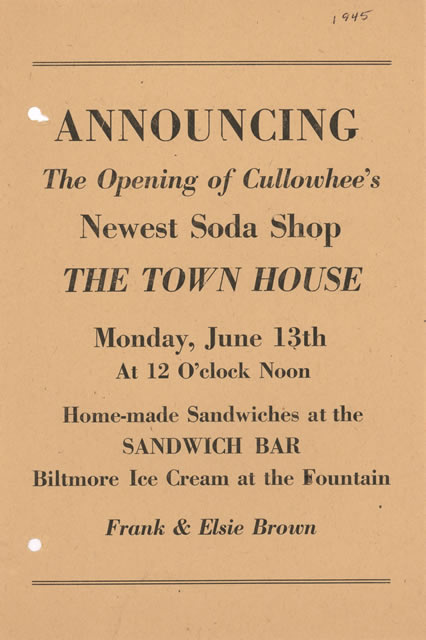
The Town House restaurant (which presently houses a Subway shop) quickly became a center for student social life after it opened in 1949.
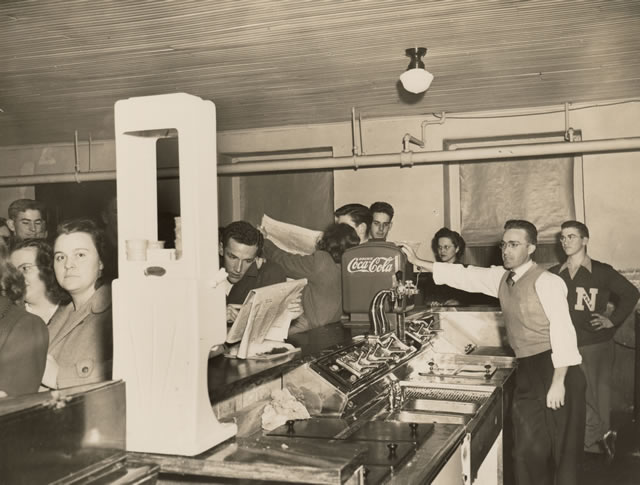
The crowded College Shop in the basement of Joyner Building in the late 1940s. Joe Wallin, with his hand on the Coke machine, managed the combination snack bar and bookstore. By Christmas 1957, when the student body had grown to 1,200, the College Shop moved to larger quarters on the main floor of the Student Union building across from Joyner.
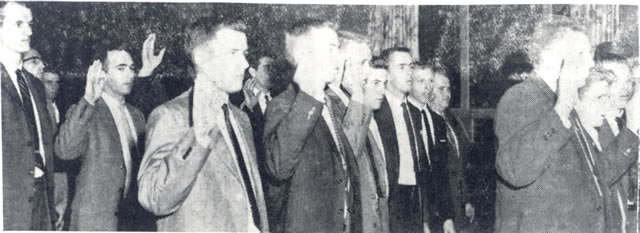
Swearing in the members of the first national fraternity organized at Western Carolina College. In 1956, twelve students began a local fraternity which two years later affiliated with Kappa Sigma Kappa as its Chi Delta chapter. In the 1960s, Greek organizations (both male and female) became a significant part of campus social life.
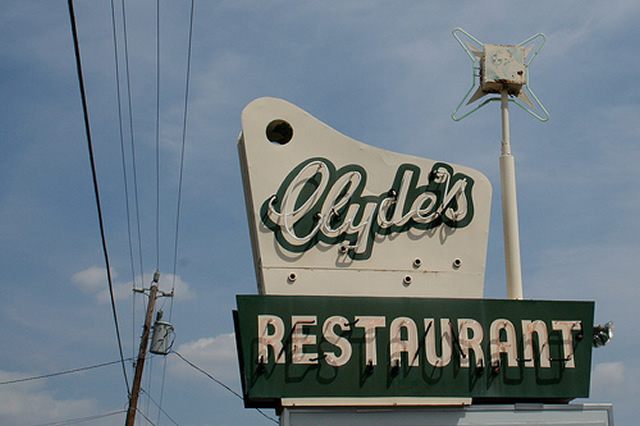
Clyde's Restaurant in West Waynesville became a popular student hangout after World War II. Its popularity was no doubt aided by the fact that it was the closest establishment to Cullowhee that served beer.
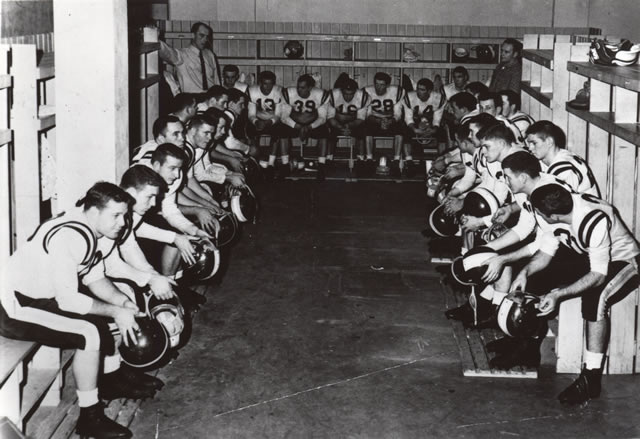
T
Coach Dan Robinson, standing left rear, with his 1958 football team in the locker room in Stillwell Building. Robinson coached the Catamount team from 1956 to 1969. Standing right is assistant coach Bob Setzer.
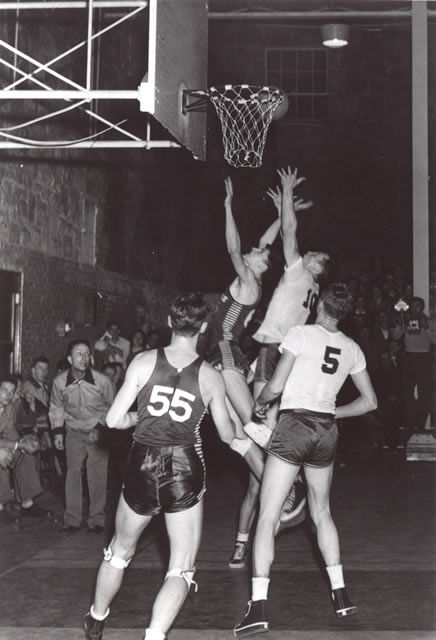
Basketball action in Breese Gymnasium in the 1948-49 season. Breese was a great improvement over the basketball courts in Madison and Joyner, but it was always close quarters for fans and players. WCTC, coached by Earnest R. "Tuck" McConnell (1947-50), won this game against North Georgia College 71-56.
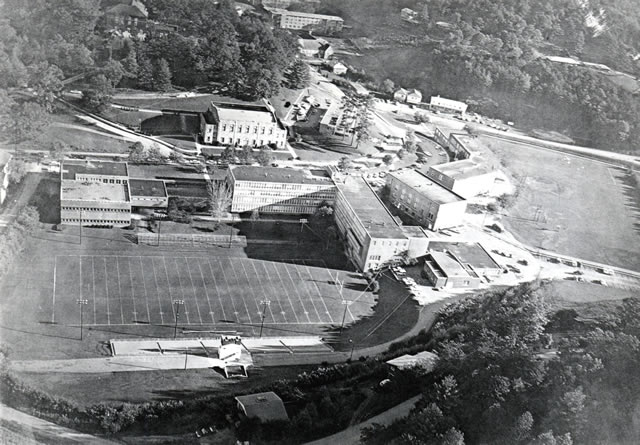
Memorial Stadium is in the center foreground of this 1960s aerial photograph. Also visible (top center) are Albright and Benton Residence Halls for women (built 1962) on the former site of Boodleville. Bird Building (built 1960) is to the right of Breese Gym, under the three pine trees where "Uncle" Dave Rogers's home once stood. The campus shopping district including the Cullowhee Post Office and the Townhouse Restaurant are visible across the road from the far end of McKee Laboratory School.
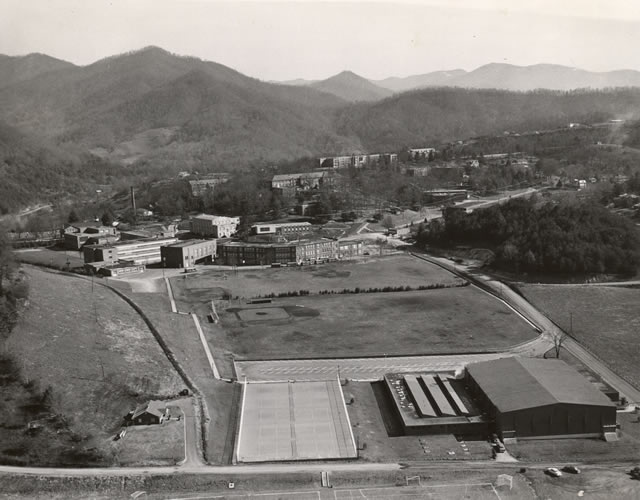
Reid Gym is in the lower right corner. To its left are tennis courts. The baseball field between Reid and McKee was later relocated for the construction of Hinds University Center and the Coulter Building.
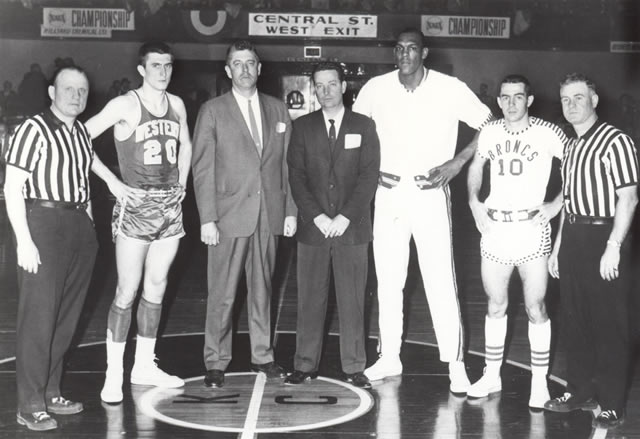
In 1963, Western Carolina reached the championship game of the National Association of Intercollegiate Athletics (NAIA) basketball tournament in Kansas City. Although the team lost to the Pan-American University Broncs, 73-62, they finished the year as the number two NAIA team in the nation. Second from left is team captain Mel Gibson, and third from left is coach Jim Gudger. Gibson was an All-American in 1963 and went on to play for two years for the Los Angeles Lakers.
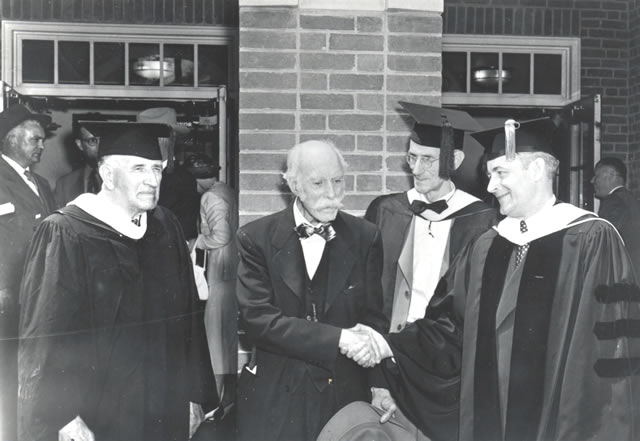
This photograph shows four presidents at the May, 1950 inauguration of Paul A. Reid. Left to right: Alonzo C. Reynolds, Robert L. Madison, W. Ernest Bird, and Reid.